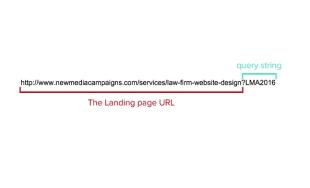Writing for the Web
Whether it's revisiting your 'about' page, sharing your organization's impact, or starting a blog, writing content can be one of the toughest parts of creating and updating a website. For those who have never written specifically for the web, it's tempting to sit down at your computer, open up a Word document and begin typing. Writing for the web, however, is different than writing a paper or a press release.
The following tips will help make your content both easier to read and also more interactive for viewers.
Attention spans for online content are short
Studies have shown that as little as 16% of online viewers read website content word-for-word. That means that you should write your content so that it can be easily read while being scanned. There are many ways to make your content easier to understand at a glance and you should absolutely experiment and see what works best for you. A few strategies we implement are:
- Break up your content into shorter paragraphs
- Use headings to clearly indicate different areas of content
- Use bulleted lists when possible
- Bold important phrases that are hidden within paragraphs
- Use styled pullout quotes to split up longer content
Use images, interactive graphics and other multimedia to complement your text
When you have to write longer articles or posts, not only can multimedia make the content look less daunting initially, but you can also use images, informative graphics and video to present the information in a different way to help explain your point.
Images
Most content management systems will allow you to insert images directly into the body of your content. When placing more than one image, be sure to think about the overall layout and try to keep the page balanced.
If you don't have quality photos readily available, below are a few resources for finding images to use on your website.
Free
Paid
Interactive Graphics
A key aspect of online content is that it shouldn't be stagnant. Interactive graphics can really give visitors incentive to click around and explore your content. Whether it's an interactive map or just a neat way to show what you offer, you should get in touch with your web development team and explore the options for presenting your content in the most interesting and engaging way possible.
Video
For information like how-to guides, showing off a new product or breaking a news story, video can be a huge selling point for making sure visitors take in your content. And with free tools like YouTube and Vimeo, placing a video in your content has never been easier. Simply copy the embed code and paste it into the HTML of your webpage.
Use links to give your content depth and credibility
One of the biggest differences between the web and offline content is the web's interconnectivity through links. Links in your content can help tell the story, provide related information, and boost your search engine ranking.
Internal links
Links to other pages on your website can help readers find other relevant information that you've written or push them to sign up to learn more so that you can continue to connect with them.
External links
One way that you can help keep your content shorter is by linking directly to relevant external webpages instead of trying to explain every last detail. This can be particularly helpful when you're talking about a breaking news story, technological term, or even just citing where you first read the information. Also, don't worry about people leaving your site by linking to another website. You can set the link to open a new tab by default and if you're writing quality content and providing value, visitors will come back to your site.
Your tone of voice should reflect where you're writing
In general, the tone of content online is more informal to give companies a more human feel (this does vary though depending on the organization). Within an organization's website, the tone can also change based on where the content is written. Oftentimes content is more formal when writing about the company and less formal when speaking to customers, like in a blog.
These are just a few ideas that you can be thinking about when writing for the web. Writing online gives you many more options than writing in more traditional forms and you should absolutely take advantage or those opportunities to make your content as engaging as possible for your readers.
(post originally written in 2011 and updated in 2018 to reflect changes in best practices)




Comments
ed green
very helpful and well writtenLeave a comment